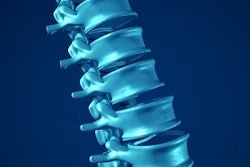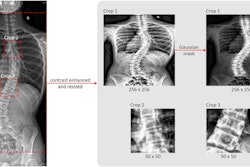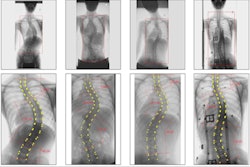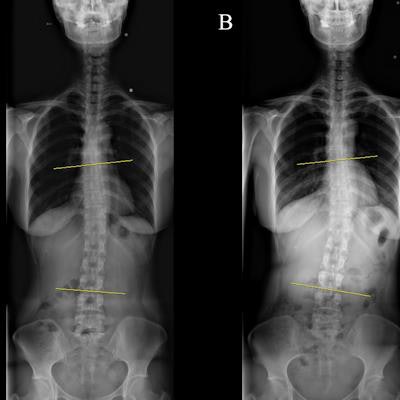
With women living longer after breast cancer treatment, research is needed on potential long-term challenges they may face. In good news, surgery won't negatively affect whole-spine alignment, according to a study published October 14 in PLOS One.
A group of physiatrists at the Catholic University of Korea in Seoul used radiography exams to investigate the long-term effects of breast cancer surgery on whole-spine alignment. More than two years after surgery, x-rays revealed no negative effects, they found.
"These results suggest that breast cancer surgery does not negatively influence spinal alignment," wrote corresponding author Dr. Jong In Lee, a professor of rehabilitation medicine, and colleagues.
Breast cancer is the most common cancer among Korean women, with a 4.3% increase in the incidence annually. Breast cancer survivors are at higher risk for spinal abnormalities such as scoliosis due to post-treatment changes in posture and bone health, according to the study authors.
However, "the results of previous studies regarding the relationship between breast cancer treatment and postural change have been inconsistent," Lee and colleagues wrote.
The researchers noted that prior studies used chest x-rays and dual-energy x-ray absorptiometry to investigate findings only in the thoracic or lumbar regions of the spine. In their research, the authors sought to investigate the long-term effects of breast cancer surgery on spinal alignment in whole-spine anteroposterior standing x-rays.
The authors gathered x-ray imaging from 200 patients (mean age 49.78 ± 9.6 years) who underwent breast cancer surgery between April 2014 and August 2020 and had at least two anteroposterior standing whole-spine x-rays. Patients had undergone either breast-conserving surgery (BCS), mastectomy alone, or mastectomy with immediate breast reconstruction (IBR).
The first x-ray was performed within 60 days postoperatively and a follow-up x-ray was conducted ≥ 300 days later. Spinal curvature was measured using the Cobb angle on whole-spine x-rays, with the greatest curvature marked between two lines on the film. Scoliosis was defined as ≥ 10° of curvature.
At initial radiological assessment, the mean Cobb angle was 5.4° and all but one of the 200 patients had mild scoliosis (10°-20°), with no significant differences in Cobb angles and proportions of scoliosis among the three surgery groups, according to the findings.
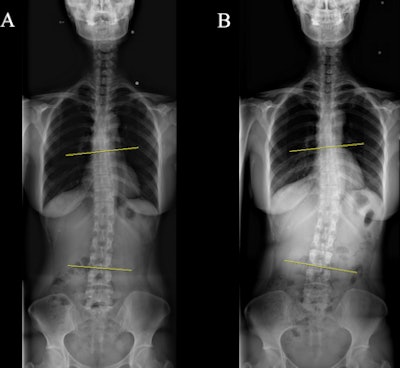 Demonstration of Cobb angle on whole-spine radiograph in one patient with a significant change in spinal curve; (A) initial radiograph, (B) follow-up radiograph. Image courtesy of PLOS One.
Demonstration of Cobb angle on whole-spine radiograph in one patient with a significant change in spinal curve; (A) initial radiograph, (B) follow-up radiograph. Image courtesy of PLOS One.The mean interval between the initial and follow-up x-ray was 28.46 ± 13.39 months (median, 26.41 months). In follow-up x-rays, the mean change and mean absolute value of the change in Cobb angle were 0.4 ± 1.65° and 1.25 ± 1.15°.
"There were no significant differences in angular change or absolute value of angular change among the three groups," the authors wrote.
However, the researchers did identify three patients who showed a significant progressive angular change in the follow-up x-ray, and one patient without scoliosis in the initial x-ray who was diagnosed with scoliosis in the follow-up x-ray.
Ultimately, Lee and colleagues suggest that various physiological changes may trigger adaptive changes in posture following surgery, such as pain or limited upper limb motion. Some studies have reported that breast weight influences an individual's center of gravity, which could lead to changes in posture after breast surgery. Furthermore, the loss of flexibility and mobility in irradiated skin and subcutaneous tissue can lead to undesired postural changes, they wrote.
Thus, more research is needed to investigate these issues. The results of this study are meaningful, however, because they reflect realistic effects of breast cancer treatment on spinal alignment in a real-world clinical practice, the authors noted.





